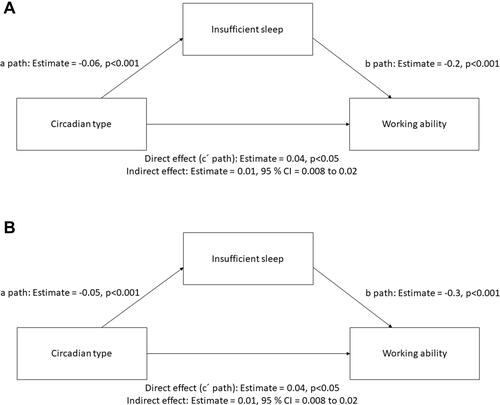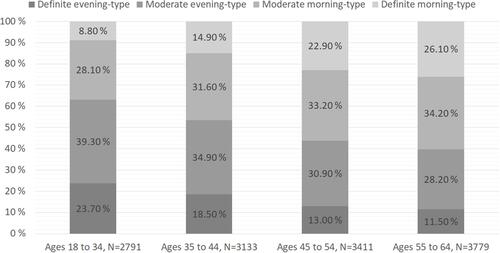Figures & data
Table 1 Descriptive Information on Sleep and Work Situation by Circadian Type in the Population-Based Study Sample of Finnish Working Age Adults
Table 2 Work Well-Being as General Exhaustion and Working Ability by Circadian Type and Sleep as Insufficient Sleep and Social Jet Lag by Circadian Type. Generalized Linear Models, Adjusted with Age and Gender, with Definite Morning-Types are as the Reference Group. Percentages in the Table are Given Regarding General Exhaustion on Those Reporting General Exhaustion Often and Regarding Insufficient Sleep on Those Reporting Getting Rarely or Never Enough Sleep
Table 3 Working Ability by Insufficient Sleep and Social Jet Lag for Each Circadian Type Separately. Generalized Linear Models, Adjusted with Age and Gender, with Those Getting Enough Sleep as the Reference Group
Figure 2 Mediation analysis with insufficient sleep as a mediator for the association between circadian type and working ability. Direct effect is the association between circadian type and working ability while controlling for insufficient sleep. Indirect effect is the measure of the mediation effect. (A) Mediation analyses for those aged 35 to 44 years, and (B) for those aged 45 to 55 years.


